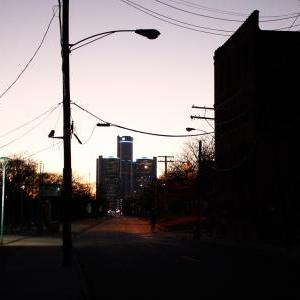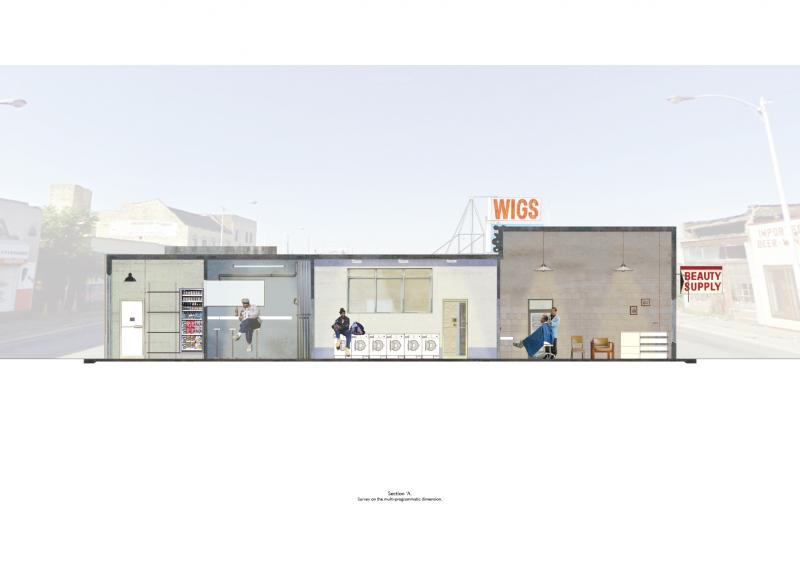As the slogan goes, ‘Detroit Hustles Harder’. Once the third-largest city in the United States, now Detroit is so synonymous with economic collapse and architectural ruin that the images of its decay are as clichéd as they are poignant. As the home of the US auto industry’s ‘Big Three’ – Ford, Chrysler and General Motors – Motor City relies on federal life-support, and with a population that has contracted by more than 60 per cent since 1950, Detroit has enough vacant land to accommodate Manhattan, Boston and San Francisco combined.
If ‘America is the original version of modernity’, as Jean Baudrillard believed, then Detroit offers us a vision of what the end of modernity might look like.
This year Intermediate 1 visited Detroit to confront the idea of architectural redundancy. Acting as archaeologists of the immediate future (to paraphrase Reyner Banham), our considerations uncovered misplaced artefacts, failed architectural precedents and images of past declines and future ambitions. Working in defiance of conventional architectural norms, the unit sought to design real, surreal or entirely speculative interventions within the remains of the Paris of the West.
Projects included providing a religiously inspired exodus to Michigan’s Upper Peninsula; detoxifying the city by sealing residents in the Packard Plant; stripping a suburb of all historically consonant detail; refunding citizens by allowing them to rework their houses using neighbouring buildings; redefining Gratiot Avenue through the last remaining corner store; adjusting the relative density between the suburbs and downtown through demolition; using the urban prairie to farm road-kill; restarting the Packard assembly line to disassemble the surrounding workers’ accommodation; relocating the banks along Woodward Avenue to the local police station; delivering mail by tank; allowing the most avaricious developers to fight it out; and, finally, creating a ‘living archive’ of the city housed in a reclaimed salt mine beneath East Detroit.
Staff
Mark Campbell
Stewart Dodd
With thanks
Barbara-Ann Campbell-Lange
Kate Davies
David Dunster
Belinda Flaherty
Kenneth Fraser
Murray Fraser
Thomas Haywood
Jerry Herron
Francesca Hughes
Saskia Lewis
CJ Lim
Claire McManus
Monia Di Marchi
Joel Newman
Frank Owen
Christopher Pierce
Tom Powell
Charles Rice
Damian Rogan
Constantino di Sambuy
Ingrid Schroeder
Marc Schwartz
Takero Shimazaki
Brett Steele
Sylvie Taher
Vere Van Gool
Manja Van der Worp
Camille Corthouts
The American pursuit of happiness reconsiders the architecture of the American consumerism in Detroit.
Taking the corner store as the type of architecture that symbolizes consumption in Detroit, the project questions the cultural and urban values the corner offers to a city in decline











![[ I-2 ] The Role of the Community](http://pr2013.aaschool.ac.uk/submission/uploaded_files/INTER-01/thumbnails300/Steven.Price-1.jpg)


























































